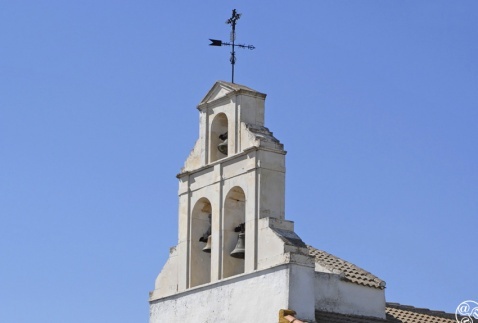
Parroquia de la Inmaculada Concepción |
|
SAN SEBASTIÁN DE LOS BALLESTEROS
by Saskia Mier
The residents of San Sebastián de los Ballesteros are colloquially known as "Germans", due to the large number of colonies that fled Germany and settled here after the expulsion of the Jesuits. The town now has around 810 inhabitants.
HISTORY
In 1615, the Compañía de Jesús acquired the jurisdiction and dominion of well-known lands called Ballesteros and Gregorio, believed to be the origins of today's San Sebastián de los Balesteros. The early inhabitants of the area are said to have maintained a certain relationship with the troops of the Catholic Monarchs in the Conquest of Granada, particularly the army of crossbowmen (ballesteros), resulting in the town being named after them.
After the expulsion of the Jesuits in 1768, the colonization, financed by the State in the interests of King Carlos III, aimed to promote agriculture and industry in an area depopulated and threatened by banditry. This was effected to increase the security of the Camino Real that linked Madrid with Cádiz.
The project, prepared by Pedro Rodríguez de Campomanes and entrusted to Pablo de Olavide, was named New Populations of Andalusia and Sierra Morena. It involved the arrival of about 390 settlers from Central Europe, mainly German and French, along with inhabitants from neighboring towns. The settlers were given housing, animals and a plot of about twenty-eight fanegas for their agricultural work. The town became independent from La Carlota in1822.
Hotels near San Sebastián de los Ballesteros
Book Hotels near San Sebastián de los Ballesteros
THINGS TO SEE
Molino del Rey
The mill was built by the Jesuits in the second decade of the seventeenth century, and used for milling olives until the expulsion of the Jesuits in 1767, when all property was seized by the State. The settlers who repopulated the town resumed the work of cultivating these lands, using the Molino del Rey for milling the harvest. In the twentieth century it had already become private property, but remained active until it was abandoned in the 1950s. The complex is classified as an Asset of Cultural Interest by the Ministry of Culture of the Junta de Andalucía and is included in the catalogue of farms, haciendas and wineries of the Ministry of Public Works of the Junta de Andalucía. It has recently been refurbished, and can be seen on Calle La Colonia.
La Tahona
This is a semi-basement that would once have served as a grain store for the settlers of the town in the time of Carlos III. The vault of the construction is particularly striking. It was later used as a bakery, and today serves as a venue for various cultural activities such as plays, flamenco singing and workshops. La Tahona is located on Calle La Colonia.
Parroquia de la Inmaculada Concepción
The original church dated back to the eighteenth century, but the church that stands today was built in its place in 1956. It still houses images from the original eighteenth-century construction, which are well conserved. It can be found on Plaza del Fuero.
Simposium Internacional de Escultura
This annual event was conceived with the intention of gradually equipping Andalusia with a significant sculptural portfolio and promoting cultural, artistic and touristic activity. Meetings were organised so that the villages of La Victoria and San Sebastián de los Ballesteros could participate in these cultural developments. This Simposium Internacional de Escultura consists of the participation of ten sculptors of different nationalities, who must create an outdoor sculpture in a public place. All the works are executed in Capri cream limestone, from the quarries located in the Cordovan town of Cabra. This is usually celebrated at the end of September and in a different location each year.
GASTRONOMY
When visiting San Sebastián de los Ballesteros, try some of the traditional dishes which define the area such as salmorejo (tomato and garlic soup), pisto de verduras y hortalizas (vegetable stew), gazpacho, migas (fried bread usually served with chorizo or sardines), guiso de garbanzos (chickpea stew), potaje con aves de caza (game meat stew) and guiso de pavo con fideos (turkey stew with pasta noodles). Sweet treats include rosquillos de huevo (sugar donuts), pestiños (sweet honey pastries) and doblaítas (stuffed sweet pasties).
FESTIVALS
Cabalgata Reyes Magos
Three Kings procession celebrated on the evening of 5 January.
Día de San Sebastián
Celebrated the 20 January.
La Candelaria
Celebrated the 2 February.
Carnaval
Celebrated in February.
Día de Andalucía
Celebrated the 28 February.
Semana Santa
Holy Week (dates vary each year).
Romería de San Isidro
Celebrated the 15 May.
Feria de Santiago
Celebrated the 25 July.
Verbena Popular
Celebrated the second week of August.
Simposium Internacional de Escultura
Celebrated between the end of September and the beginning of October.
NEARBY VILLAGES
The neighbouring villages to San Sebastián de los Ballesteros are La Rambla, Fernán Núñez, La Victoria and La Guijarrosa.
